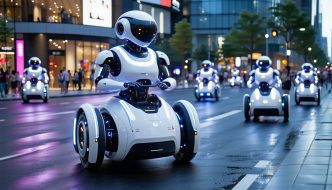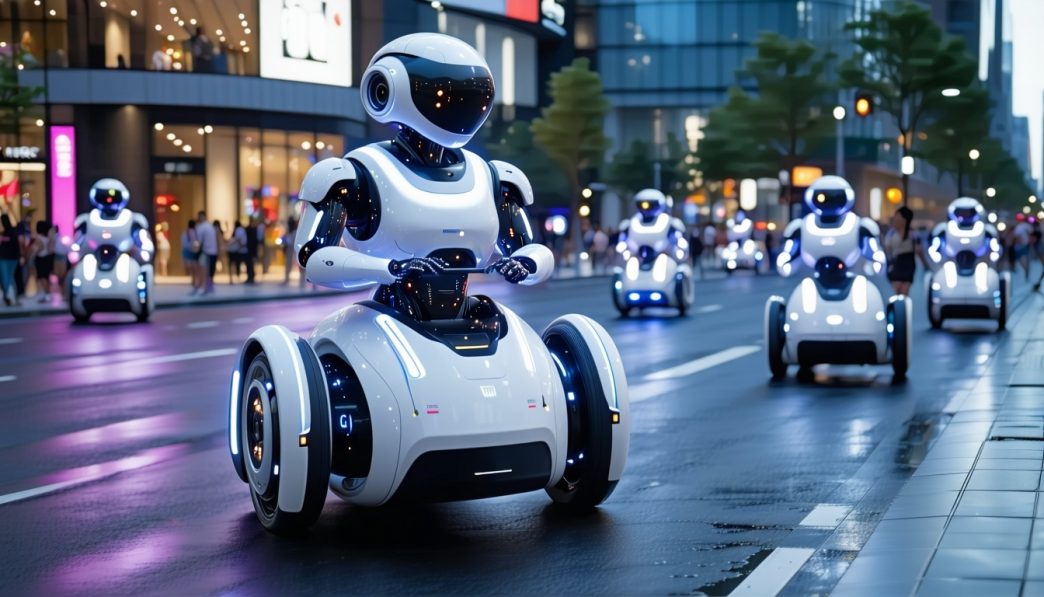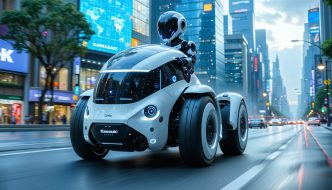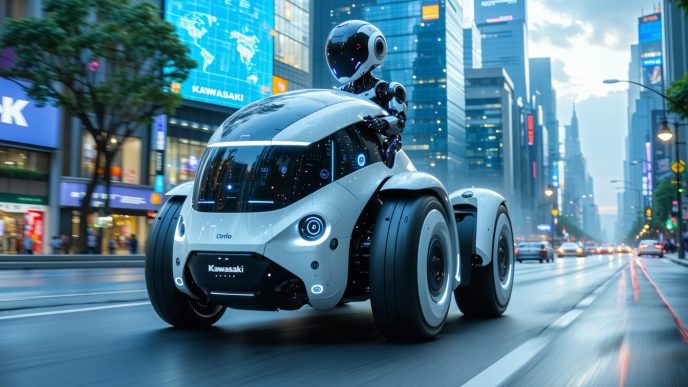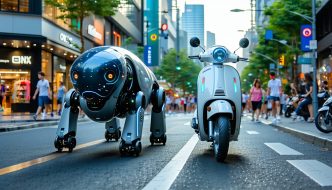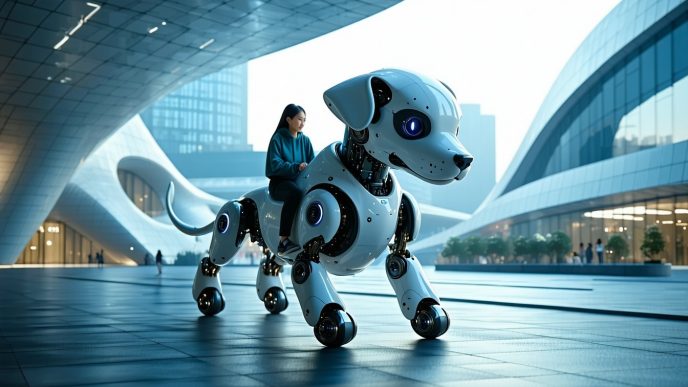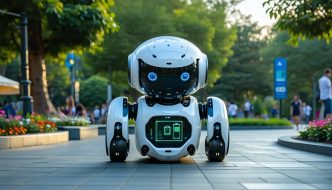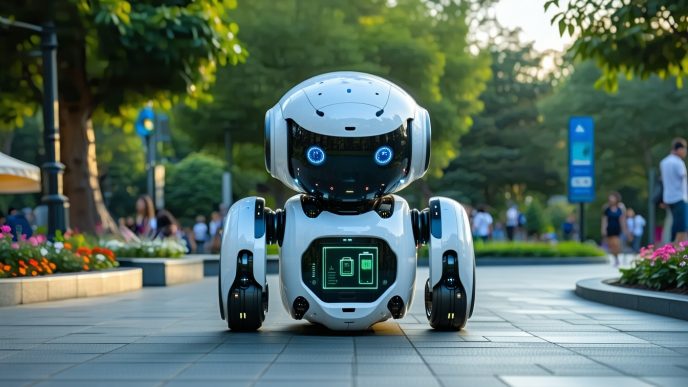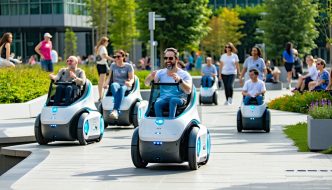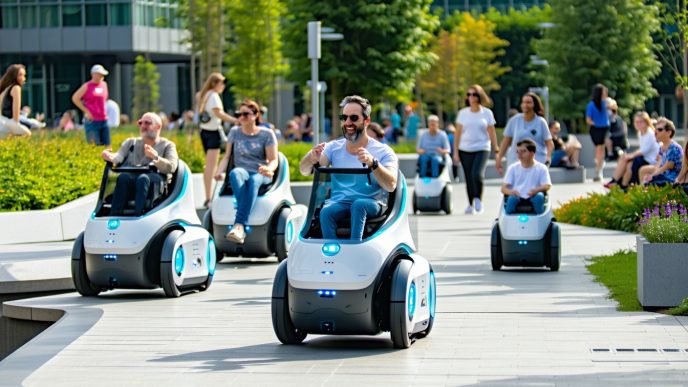The Evolution of Rideable Robots
Introduction to Rideable Robots
Rideable robots represent a new frontier in personal mobility and transportation technology. These innovative devices merge robotics with human transport, offering solutions that aim to enhance convenience and efficiency in daily commutes and short journeys. Functions can vary from simple leisure activities to advanced transportation needs, catering to various user preferences and environments.
The rise of rideable robots is closely linked to advancements in robotics, sensor technologies, and battery efficiencies, making them viable options for individuals seeking alternatives to traditional vehicles.
History and Development of Rideable Robots
The development of rideable robots can be traced back to early concepts of personal transport devices. Here’s a brief overview highlighting significant milestones in their evolution:
| Year | Milestone | Description |
|---|---|---|
| 1965 | Introduction of the Segway | The Segway HT marked a significant development in rideable technology, providing personal transport through self-balancing mechanics. |
| 2001 | Commercial Launch | Following its introduction, the Segway was commercially available, raising interest in personal robotic transport. |
| 2010 | Electric Scooters Emergence | The popularity of electric scooters surged, thanks to improvements in battery technology and portable design. |
| 2015 | Rise of Hoverboards | Hoverboards gained widespread fame, representing a cultural shift towards younger demographics seeking fun and agile personal transport. |
| 2020 | Advancements in AI Integration | Robots gained enhanced AI capabilities for better navigation and interaction in urban settings, setting the stage for more complex models. |
| 2023 | Introduction of Animal-Inspired Bots | Innovations like the kawasaki corleo robot and the xiaomi cyberdog 2 rideable concept capture interest with their unique designs and functionalities. |
Throughout this timeline, rideable robots have evolved from conceptual devices to practical applications that address real-world mobility issues. Their adaptability allows for integration into various settings, including urban environments and rural landscapes.
As interest continues to grow, it is clear that rideable robots are not just a passing trend, but a significant development in the transportation sector. With ongoing improvements in performance and safety features, these devices are set to redefine personal transportation. Challenges remain, such as regulatory considerations and user acceptance, but the potential remains vast.
For an in-depth look at the advancements in battery technology, visit our article on battery life of rideable robots or explore how these technologies can assist those with mobility challenges at rideable robots for disabled mobility.
Applications of Rideable Robots
Rideable robots are increasingly being utilized in various contexts, highlighting their versatility and the potential they hold for transforming transportation. This section will explore their applications in personal transportation, commercial use cases, and their potential impact on daily life.
Personal Transportation
Rideable robots offer a modern solution for personal travel needs. Devices such as electric scooters, unicycles, and skateboards provide individuals with efficient and eco-friendly alternatives to traditional vehicles. These options not only reduce traffic congestion but also promote sustainability by lowering carbon footprints.
| Type of Rideable Robot | Average Speed (mph) | Range (miles) | Weight (lbs) |
|---|---|---|---|
| Electric Scooter | 15 | 10 – 25 | 25 – 30 |
| Electric Unicycle | 12 | 15 – 30 | 22 – 25 |
| Electric Skateboard | 12 | 7 – 15 | 10 – 15 |
| Segway | 12 | 24 | 40 – 70 |
This table illustrates the various rideable robots with different speeds, ranges, and weights, allowing users to choose based on their specific needs. For those with mobility challenges, rideable robots for disabled mobility can offer significant benefits, enhancing independence and mobility.
Commercial and Industrial Use Cases
In commercial settings, rideable robots are proving to be valuable assets. Businesses are leveraging these advanced technologies for deliveries, warehouse operations, and even employee transportation within large facilities. Companies can use rideable robots to efficiently move goods, thereby increasing productivity while reducing labor costs.
| Industry | Application Example |
|---|---|
| Retail | In-store delivery systems |
| Logistics | Automated goods transport in warehouses |
| Hospitality | Guest transport within large hotels and resorts |
| Manufacturing | Material handling and transport |
The table highlights various industries employing rideable robots, demonstrating their potential to streamline operations and improve efficiency.
Potential Impact on Daily Life
The integration of rideable robots into daily life holds significant promise. By providing alternatives to traditional transportation methods, these robots can enhance overall convenience for users. They can aid in navigating urban environments efficiently, reduce reliance on cars, and promote a healthier lifestyle through more active commuting options.
Moreover, rideable robots can make urban areas safer by reducing the number of vehicles on the road, leading to fewer accidents. The concept of integrating these robots into smart city infrastructures could further enhance their functionality and societal benefits. Innovations, such as the kawasaki corleo robot or the xiaomi cyberdog 2 rideable concept, showcase how forward-thinking designs can redefine personal transportation.
Overall, the potential applications of rideable robots extend far beyond just personal transportation, impacting commercial efficiencies and fundamentally altering the way people interact with their environments.
Types of Rideable Robots
Rideable robots encompass a variety of innovative personal transportation solutions designed to improve mobility and enhance everyday commuting experiences. This section explores some of the most common types of rideable robots, highlighting their unique features and capabilities.
Self-Balancing Scooters
Self-balancing scooters are a popular choice for personal transportation. They operate on gyroscopic technology that allows the rider to maintain balance while in motion. Riders control the speed and direction by shifting their weight, making them intuitive to use.
| Feature | Specification |
|---|---|
| Maximum Speed | Up to 12 mph |
| Weight Limit | 220 – 300 lbs |
| Battery Life | 15 – 30 miles |
| Charging Time | 2 – 4 hours |
Self-balancing scooters are ideal for short-distance travel and often used in urban settings for last-mile commuting solutions.
Electric Unicycles
Electric unicycles offer a unique rideable option where the user stands on a single wheel. These devices provide significant agility and can navigate through tight spaces with ease. Like self-balancing scooters, they rely on weight shifts to control movement.
| Feature | Specification |
|---|---|
| Maximum Speed | Up to 20 mph |
| Weight Limit | 220 – 300 lbs |
| Battery Life | 20 – 40 miles |
| Charging Time | 1 – 3 hours |
Electric unicycles are popular among tech enthusiasts and tend to appeal to riders looking for a challenge due to their balancing requirements.
Electric Skateboards
Electric skateboards combine traditional skateboarding with modern technology. Equipped with electric motors, these boards can reach various speeds depending on the model and provide a fun and exciting way to travel.
| Feature | Specification |
|---|---|
| Maximum Speed | 15 – 30 mph |
| Weight Limit | 200 – 280 lbs |
| Battery Life | 10 – 30 miles |
| Charging Time | 2 – 6 hours |
Electric skateboards are particularly favored by younger commuters and thrill-seekers due to their versatility and maneuverability.
Segways and Personal Transporters
Segways offer a more robust and stable platform for personal transportation. They consist of two parallel wheels and a handlebar for easy navigation. Segways are commonly used for tours and in environments where individuals need to cover larger areas comfortably.
| Feature | Specification |
|---|---|
| Maximum Speed | Up to 12.5 mph |
| Weight Limit | 250 – 300 lbs |
| Battery Life | 24 – 38 miles |
| Charging Time | 4 – 8 hours |
Segways are designed for efficient transportation, particularly in urban environments and large public spaces.
Exploring the various types of rideable robots helps individuals understand the multifaceted options available for personal transport. Each option serves different needs and preferences, thus paving the way for a broader adoption of these innovative solutions. For more information on mobility enhancements, consider exploring articles on rideable quadrupeds vs scooters and battery life of rideable robots. Additionally, learn about rideable robots for disabled mobility for insights into how these technologies are making transportation more accessible.
Key Features of Rideable Robots
To understand rideable robots better, examining their key features is essential. These attributes include mobility and maneuverability, battery life and charging capabilities, as well as safety features. Together, they contribute to the overall user experience and effectiveness of these innovative personal transport solutions.
Mobility and Maneuverability
Mobility and maneuverability are critical for rideable robots since they must navigate various environments, from crowded urban streets to narrow paths. Many rideable robots boast designs that allow for effortless steering and balanced movement. Their ability to turn quickly and travel across uneven terrains is a significant advantage.
| Feature | Description |
|---|---|
| Turning Radius | Varies by model (typically between 1.5 to 3 feet) |
| Weight Capacity | Generally support between 220 to 300 lbs |
| Speed | Commonly ranges from 10 to 20 mph |
Battery Life and Charging
Battery life is a crucial consideration for those utilizing rideable robots for transportation. The longevity of the battery directly impacts the distance that can be traveled before needing a recharge. Many models offer various charging options, which enhances convenience.
| Type of Rideable Robot | Average Battery Life | Charging Time |
|---|---|---|
| Self-Balancing Scooters | 10 to 15 miles | 2 to 4 hours |
| Electric Unicycles | 15 to 20 miles | 2 to 5 hours |
| Electric Skateboards | 10 to 15 miles | 1 to 3 hours |
| Segways and Personal Transporters | 20 to 25 miles | 4 to 6 hours |
For more details on battery performance, refer to our article on battery life of rideable robots.
Safety Features
The safety features integrated into rideable robots are vital for user confidence and accident prevention. Many models are equipped with built-in sensors, lights, and alarms to enhance safety while in use. Some robots also come with features like anti-lock braking systems and speed limiters.
| Safety Feature | Description |
|---|---|
| Anti-lock Braking System | Prevents wheel lock during sudden stops |
| Adjustable Speed Settings | Allows users to set maximum speeds |
| LED Lights | Increases visibility at night |
| Stability Sensors | Detects tilting and assists in balance |
These safety features are designed to aid users, reducing the risk of accidents and ensuring a safer ride. For insights on rideable robots specifically designed for mobility assistance, visit our article on rideable robots for disabled mobility.
The combination of mobility, battery life, and safety measures makes these devices practical solutions for modern transportation challenges.
Rideable Robots in the Market
The market for rideable robots has seen significant growth and innovation in recent years. This section explores current market trends and the future outlook for rideable robots, focusing on their practicality in both personal and commercial use.
Current Market Trends
The rise of rideable robots can be attributed to various factors, including urbanization, the need for efficient transportation, and environmental concerns. Certain trends are shaping the landscape for rideable robots:
| Trend | Description |
|---|---|
| Increased Demand | A growing number of urban dwellers seek innovative transportation methods to navigate congested cities. |
| Eco-Friendly Solutions | With a focus on sustainability, many rideable robots are electric, reducing carbon footprints compared to traditional vehicles. |
| Accessibility Features | Companies are developing rideable robots that cater to individuals with disabilities, enhancing mobility options. |
| Integration of Technology | Advances in artificial intelligence and IoT are leading to smarter, more adaptive rideable robots that enhance user experience. |
The demand for rideable robots is also influenced by factors such as affordability, functionality, and ease of use. Additional features like extended battery life of rideable robots and safety mechanisms are becoming essential for user adoption.
Future Outlook for Rideable Robots
Looking ahead, the future of rideable robots appears promising. Here are potential developments in this sector:
| Expected Development | Description |
|---|---|
| Enhanced Capabilities | Innovations will likely lead to rideable robots that can perform multiple functions, ranging from transportation to delivery services. |
| Smart City Integration | Rideable robots may become integrated within smart city infrastructure, facilitating seamless transportation and communication. |
| Higher Adoption Rates | As technology improves and becomes more accessible, more people may embrace rideable robots for daily commutes and errands. |
| Expanding Market Segments | The potential for rideable robots in sectors such as logistics and tourism indicates diverse commercial opportunities. |
The ongoing exploration of concepts like the kawasaki corleo robot and the xiaomi cyberdog 2 rideable concept illustrates the industry’s commitment to innovation and versatility in providing rideable solutions. The future holds exciting prospects as these technologies evolve and become an integral part of urban mobility solutions.
Challenges and Considerations
As the field of rideable robots evolves, several challenges and considerations emerge that could impact their development and widespread adoption. These include regulatory hurdles, user adoption and acceptance, as well as maintenance and repair.
Regulatory Hurdles
Many regions have not yet established clear regulations governing the use of rideable robots in public spaces. This lack of regulatory framework poses challenges for manufacturers and users alike. With safety concerns and the need for structured traffic rules, authorities must develop policies that address the operation of these devices in urban environments.
| Key Regulatory Areas | Description |
|---|---|
| Speed Limits | Restrictions on how fast rideable robots can travel in specific areas. |
| Age Restrictions | Policies that dictate the minimum age for operating rideable robots. |
| Insurance Requirements | Mandates regarding liability insurance for users. |
| Design Standards | Specifications that ensure safety and functionality. |
User Adoption and Acceptance
For rideable robots to become mainstream in personal and commercial transportation, user adoption is essential. Potential users may have reservations concerning safety, reliability, and the learning curve associated with operating these devices. Education and awareness campaigns can help showcase the benefits and ease of use, potentially increasing acceptance.
| Factors Influencing Adoption | Description |
|---|---|
| Safety Features | The presence of effective safety mechanisms increases trust in the technology. |
| Demonstrations | Hands-on experiences can alleviate concerns and foster confidence. |
| Peer Reviews | Positive feedback from early adopters can significantly influence others’ willingness to adopt. |
Maintenance and Repair
The maintenance and repair of rideable robots present another crucial consideration for users and providers. Regular upkeep is vital to ensure longevity and optimal performance. Users must be informed about routine maintenance practices and reliable repair options in their area.
| Maintenance Requirements | Description |
|---|---|
| Battery Care | Proper charging routines and care of the robot’s battery are essential for durability. Learn more about battery life of rideable robots. |
| Technical Support | Availability of support services for repairs and troubleshooting enhances user confidence. |
| Component Replacement | Knowledge of parts that may need replacement over time, such as wheels or motors, is crucial. |
These factors highlight the complexities involved in the integration of rideable robots into everyday life. Addressing these challenges proactively will be vital for the successful implementation and acceptance of this innovative form of transportation. For example, examining the limitations of rideable quadrupeds versus scooters can provide insights into different applications of rideable robots. For those interested in mobility solutions, resources like rideable robots for disabled mobility may also offer valuable perspectives.
Rideable Robots vs. Traditional Transportation
The emergence of rideable robots has introduced a new dimension to personal transportation, prompting comparisons with traditional modes of travel. Understanding the benefits and drawbacks of rideable robots can provide insight into their role in the future of transport.
Benefits of Rideable Robots
Rideable robots offer several advantages over conventional vehicles:
| Benefit | Description |
|---|---|
| Eco-Friendly | Many rideable robots, such as electric scooters and unicycles, produce zero emissions, contributing to cleaner air and reduced carbon footprints. |
| Cost-Effective | Operating costs for rideable robots tend to be lower than those of cars regarding fuel and maintenance. For instance, charging an electric rideable robot can be significantly cheaper than fueling a car. |
| Space Efficiency | These robots require less parking space, which alleviates congestion in urban settings. Their compact size makes them easier to store and maneuver in crowded areas. |
| Time-Saving | Users can easily navigate through traffic and find quicker routes, which can lead to reduced commuting times. |
| Accessible Design | Some rideable robots are designed specifically for disabled individuals, enhancing mobility and independence. More details can be found in our article on rideable robots for disabled mobility. |
Drawbacks and Limitations
Although rideable robots present numerous benefits, they also have limitations that must be considered:
| Limitation | Description |
|---|---|
| Safety Concerns | The risk of accidents can be higher due to user inexperience or lack of infrastructure, such as dedicated lanes for these vehicles. |
| Range Limitations | Rideable robots often have limited battery life, making long-distance travel less feasible. For insights into battery performance, refer to our article on battery life of rideable robots. |
| Weather Dependence | Many rideable robots are not ideal for use in adverse weather conditions, such as rain or snow, which may limit their accessibility. |
| Regulatory Challenges | Policies and regulations regarding the use of rideable robots vary by location, and navigating these rules can be complex. |
| User Adaptation | Some individuals may be hesitant to adopt new technology, leading to slower acceptance rates within communities. |
The modernization of transportation through rideable robots represents a significant shift in personal mobility solutions. The benefits provide compelling reasons for their growth, while the limitations highlight areas that require attention to ensure widespread acceptance and safety.
The Future of Personal Transportation
As the landscape of personal transportation evolves, rideable robots are poised to play a significant role in shaping the future of mobility. This section explores the innovations in rideable robotics and their potential for integration with smart cities.
Innovations in Rideable Robotics
The field of rideable robots is experiencing rapid advancements driven by technology and user demands. Key innovations include enhanced mobility features, improved battery efficiency, and advanced safety mechanisms.
| Innovation Area | Description |
|---|---|
| Autonomous Navigation | Many rideable robots are incorporating AI to navigate autonomously, making them user-friendly and safe in crowded environments. |
| Smart Connectivity | Integration with mobile applications allows users to monitor battery life, adjust settings, and access repair diagnostics. |
| Energy Efficiency | New battery technologies and regenerative braking systems contribute to longer ride times and less environmental impact. |
For example, innovations like the kawasaki corleo robot are leading the charge in smart mobility solutions that promise to make transportation easier and more efficient.
Potential for Integration with Smart Cities
Rideable robots could serve as vital components in the development of smart cities. Their ability to connect and communicate with infrastructure can optimize traffic flow and reduce congestion. Shared rideable robots facilitate last-mile transportation, enhancing the overall efficiency of urban mobility.
| Smart City Integration | Benefits |
|---|---|
| Real-Time Data Sharing | Rideable robots can share traffic conditions with city planning tools to enhance road management. |
| Eco-Friendly Transportation | They promote sustainable transport options, significantly reducing carbon footprints. |
| Enhanced Accessibility | Integrating rideable robots in urban planning can improve mobility for individuals with disabilities. For more on this topic, see rideable robots for disabled mobility. |
As rideable robots become more sophisticated, they will likely complement existing transportation options, creating a cohesive ecosystem tailored to the modern needs of urban residents. The combination of rideable robots with smart city infrastructure could lead to a transformation in how individuals navigate their environments, making transportation not only more convenient but also more efficient and accessible.
Innovative concepts, such as the xiaomi cyberdog 2 rideable concept, illustrate the exciting future that lies ahead in rideable robotics. These advancements pave the way for increased adoption and application across various sectors, redefining personal transportation for the better.

